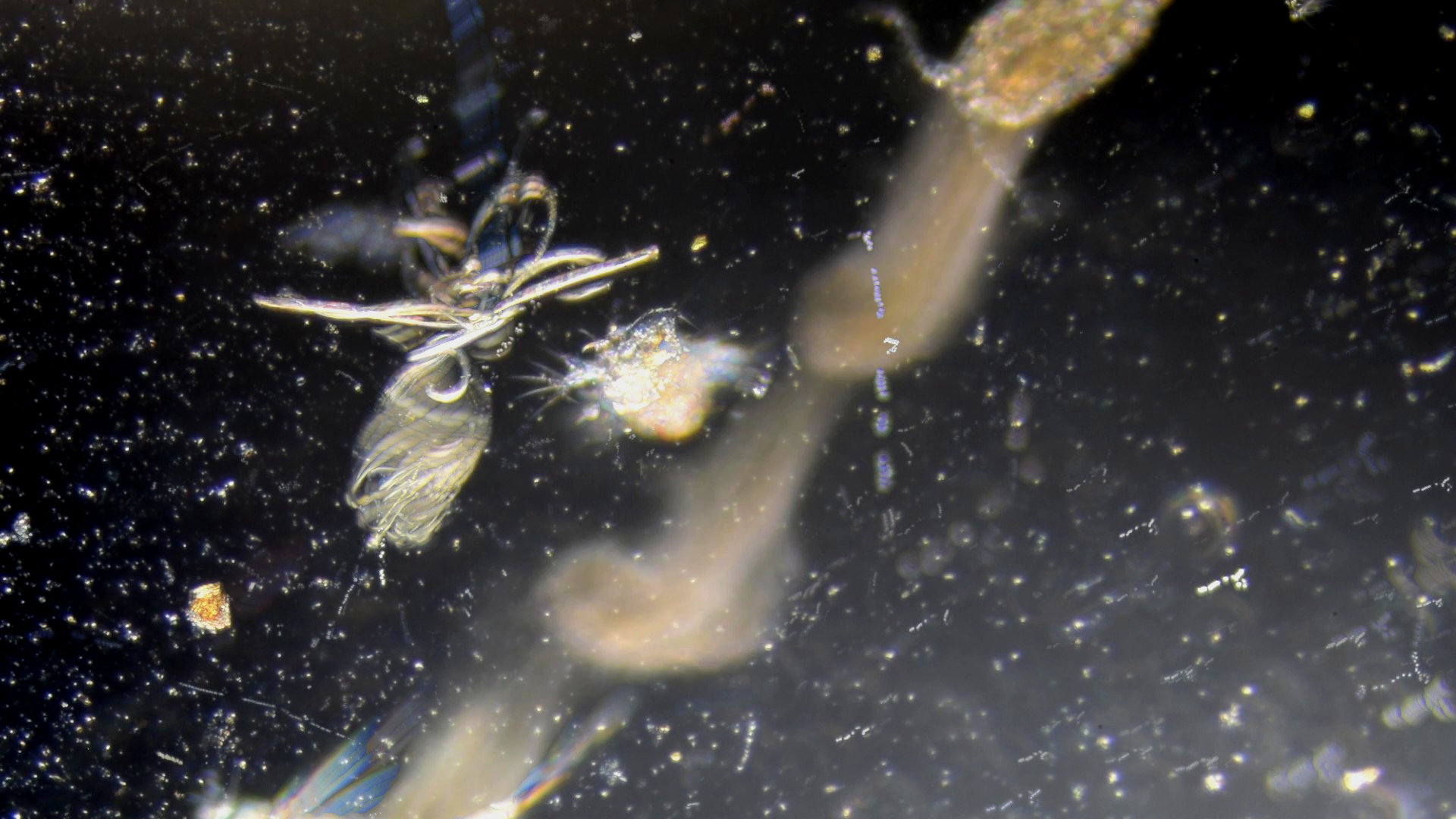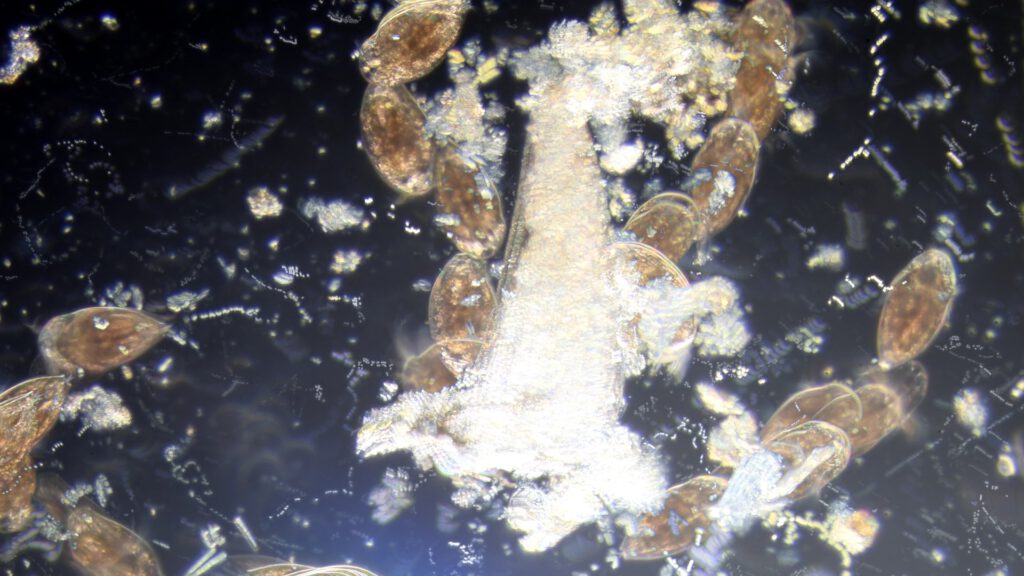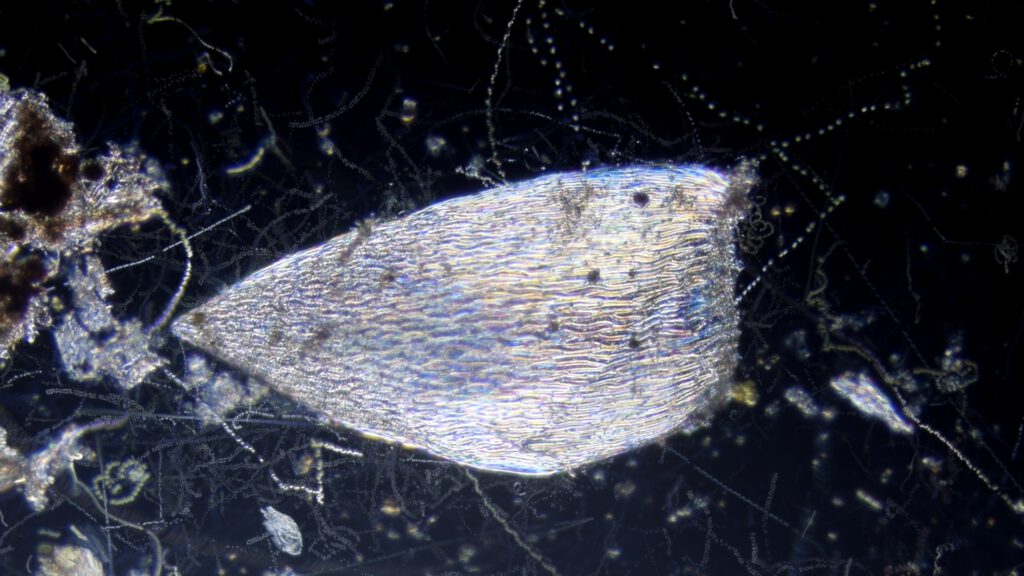Chronomicroscopy (2021). Audiovisual, Short film. Duration: 8:25
Chronomicroscopy
“chrono-” (Χρόνος): “time”
“micro-” (Mικρός): “small in size or extent”
“-scopy” (Σκοπειν): “viewing, examining, observing”
“Chronomicroscopy”: “observing the motions of small life over time.”
Chronomicroscopy is a video work in four parts, combining the playful traces of life under the microscope with a soundtrack of developing loops. It encourages the viewer to be attentive and look at the microcosmos and its inhabitants with open eyes, discovering patterns and disruptions in both the visuals as well as the audio. As an Art-Science work, Chronomicroscopy raises questions such as: “can we identify micro-organisms not by using their morphology or genetics, but by looking at their movements?” and “can we observe interactions that were previously unknown?” Although the project builds upon the histories of chronophotography and microscopic imaging dating back to the late 19th century, the choreographies of microscopic life are relatively understudied and underappreciated.
Chronomicroscopy fits within Roland’s art practice as well as his PhD research, as it is creating an experiential translation of post-anthropocentric philosophies, going beyond human exceptionalism, and stepping into an entangled, enmeshed, multi-dimensional perspective on life across spatial and temporal scales. It follows earlier works with the micro-organism Euglena gracilis, including Euglena spaceships (2016) and the Euglenizer developed at Semiotics of the Laboratory (2017), and builds upon the technique developed for workshops at Günter Seyfried’s Open Lab Class within the seminar Understanding Biomedia at the University of Applied Arts Vienna (2019) and at Darwin 2020, One of India’s Biggest Evolutionary Movements in Biology. Early concepts were shown during A Crash Course in Art & Media Technology at V2_ in December 2020.
Microscope: Nikon Diaphot TMD inverted microscope, at Bitraf
Sample from: Vesterøy, Norway
Camera: Nikon D5300, borrowed from Anneke ter Schure
Code: Processing 3, using code from Pixelate by Hernando Barragan
Guitar: Fender MIJ Traditional ’70s Mustang
Effects: Boss ME50 Multi Effect pedal
Credits
A film by Roland van Dierendonck
Microscopy & coding: Roland van Dierendonck
Music: Roland van Dierendonck
Editing & colour correction: Carlos Zorita Diaz
Special thanks
Microscope: Heikki Sørum, Bitraf, Department of Biosciences – UiO
Camera: Anneke ter Schure
Die Angewandte: Günter Seyfried and students
Darwin: Vaibhav Gadhia and participants
V2_: Alex Falk, Florian Weigl
Thanks for your support and advice: Günter Seyfried, Kristin Weissenberger, Joe Davis, Christiana Gardikioti, Omar ElKammar, Sophie ter Schure, Carlos Zorita Diaz, Anneke ter Schure, Lane Atmore, Karolina Sulich, Sarah Adkins-Jablonsky, Annike Flo, Max Munday, Șadan Ekdemir, Jelger Kroese, Tomas Byg-Fabritius, Ezra Hampikian, Erik Zepka, Anna Chocholi, Isolde Venrooy, Agnieszka Anna Wołodźko, Kaisu Koski & Peter Lloyd Jones.
Lead microperformers
“Heading Out”: mosquito larva
“Daphnia”: water flea
“The Snake and the Crab”: nematode, nauplius
Inspirations
I was inspired to develop the chronomicroscopy technique when first seeing Xavi Bou’s project Ornitographies in 2018, and when that same year I heard a talk by Ingmar-Riedel Kruse about the polygonal swimming patterns of Euglena gracilis, at the first Soft Robotics Conference in Livorno, Italy. Later I learned more artists are working with what is often called “algorithmic photography”: in particular check out the work of Alex May Arts and Simon Park (Exploring the Invisible).


